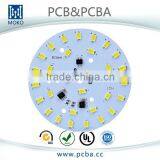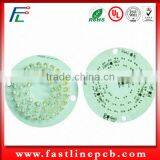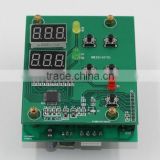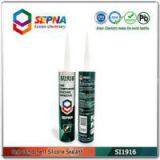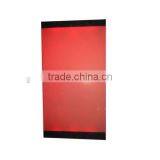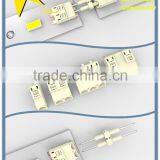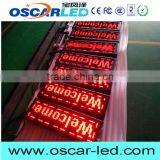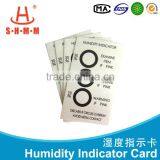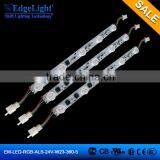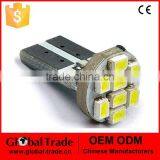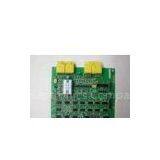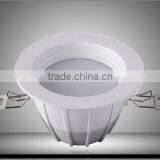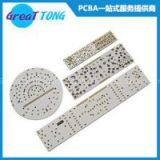LED PCB Boards are quietly powering the lighting and gadget world you see every day. By weaving copper lines onto a flat board, these circuits hold LEDs steady while helping electricity zip around without a hiccup. Anyone-from weekend tinkerers to product designers-will find that knowing how these boards work opens up fresh design possibilities.
An LED PCB is basically a little city block that keeps light-emitting diodes steady and glowing. The board carves out neat electrical highways so current can flow exactly where it's needed, and the rigid backing stops everything from flexing in transit. Heat is like the exhaust of any LED engine; the PCB spreads it out so no single spot gets cooked, which is an obvious plus for longevity. Stack several of these boards into a fixture, and you end up with a slim, power-sipping, trouble-free light that can hang around for years.
PCB assembly sits at the heart of any shining LED board. The job calls for careful eyeballing and quick hands, because tiny LED chips have to land in the right spot and stay there once the solder cools. A board that skips this step can flicker, dim, or outright fail, so getting the placement bang-on is not just a matter of neatness. Surface-mount gear usually runs the show, stacking components tightly so everything fits on a postage-stamp circuit. That compact layout pays off in crowded places like bendable light strips or beefy high-watt panels.
LED PCBs bundle a few important parts that team up to keep lights bright and cool. At the heart of many boards sits a metal core-usually aluminum-because it moves heat away almost as fast as the diodes fire. Designers lean on aluminum whenever power budgets shrink and every degree matters. In other projects, flexible substrates slide in so circuits can bend around curves or fit inside cramped housings without cracking. Mix those pieces, and engineers whip up anything from a lone status LED to a stadium-sized video wall that still looks sharp in daylight.
There are six main types of LED PCB boards depending on the application, as per the requirement. These six types are single layer, double layer, multi-layer, flexible, rigid, and lastly, hybrid LED PCB. The simplest and the cheapest are the single-layer boards, while the multi-layered boards are more advanced for use in complex circuits. Flexible bear boards give more design freedom and are easily applied in such as flexible LED strips. Rigid PCBs come in handy where form factors are essential. The hybrid boards blend various materials and technology to offer distinct merits.
Aluminum-based PCBs are the most preferred in high-power LED systems due to their ability to manage and dissipate heat more efficiently than other PCBs. The metallic core made of aluminum, as opposed to the fiberglass board used in conventional PCBs, helps in conducting the heat away from the LED system. As a result, the functionality and durability of the LEDs are increased. On the other hand, flexible or hybrid versions of the LED PCB offer benefits with flexibility and capabilities associated with them, which makes them applicable for a wide scope of LED tasks.
Picking the right LED circuit board can make or break your project. Getting that choice right boosts brightness while keeping the board cool and tidy. Always look at the workspace where the light will be. Dusty booths, humid labs, or open-air shows each ask for a little something different. Aluminum boards step in whenever heat management shoots to the top of the list. Thin flex boards happily twist around curved displays or hug the wrist of a smartwatch. Knowing those basic strengths puts you squarely on the road to the perfect PCB.
Many benefits can be attributed to the use of aluminum LED PCBs, especially when it comes to heat dissipation. Instead of hot LEDs, the cores made out of metal will facilitate heat transfer, minimizing the problem of overheating, and saving the LEDs. It makes them best best-suited form of electrical energy sources where the power demand is high, for instance, in industrial lamps and car bulbs. Even so, the kits are also less heavy and strong, which provides a formidable way of holding the LED parts in place even in severe weather.
Many people prefer to use LED PCBs in designing LED circuits since these circuit boards are known for their effectiveness and dependability. The task of laying out the circuit traces is done very precisely so as to eliminate the use of unnecessary electrical load within the circuit, which makes the LED light more efficient. This improvement is energy efficient and also reduces the operating cost of the system. Even more so, the reliability exported by the LED PCB, however, is out of this world, considering that they are made to operate under various stresses and are characterized by their long-lasting performance.
LED PCB assembly delivers bang for your buck. The process can churn out bright, solid boards without breaking the bank. Automated pick-and-place machines paired with surface-mount tricks slice labor time and cut down on blunders, which is basically instant cash back. Once the board is running, its low juice appetite and crazy-long lifetime mean you spend far less fixing things later on. That kind of cost dodge matters whether you're lighting up storefronts or powering factory gear, and it leaves your budget with a little more wiggle room.
LED PCBs have broad design considerations for varying and many of lighting and display applications. In the area of lighting, residential or commercial, energy efficiency is of importance, and LED lights come in addressing simple LED bulbs and complex LED strips. In the field of displays, PCBs with LEDs are very essential, especially when designing screens with images of high resolution that are used in TVs, computers, signage, and more general Digital Signage. The adaptability of LED PCBs to different shapes and designs is one of the factors that makes most modern lighting and display devices popular.
Alongside basic illumination and screens, LED PCB seems to be gaining momentum in the technological ecosystem. Engine bay lights, headlights, and interior lights now use LED PCBs too. Such lighting systems all have one common feature: they provide bright and stable lighting. In the health sector, LED PCBs are also employed in manufacturing systems as different operational devices. Furthermore, these applications play an important role in smart home technology and the Internet of Things (IoT), which require compact and efficient designs.
LED PCBs are headed into a shiny future, and designers can hardly keep up with the breakthroughs. New flexible boards are showing up all over; they bend at the elbow and still light up the room. High-frequency layers are sliding into the stack, turbocharging data links and telecom gear so files zip instead of crawl. Eco-minded engineers praise the tech because it's lean on power yet heavy on brightness, keeping LEDs at the heart of greener screens and clever gadgets.
A: Aluminum LED PCBs offer excellent thermal conductivity, which helps dissipate heat more efficiently. This is crucial for maintaining the longevity and performance of high-power LED lights. Additionally, aluminum PCBs are lightweight and provide better mechanical stability, making them ideal for various LED applications.
A: The LED PCB assembly process involves several steps, including solder paste application, component placement, soldering (usually through reflow or wave soldering), and inspection. This process ensures that components like SMD LEDs are correctly mounted on the PCB, providing reliable LED performance.
A: LED PCBs are commonly used in LED displays, indicators, automotive lighting, street lighting, and high-power LED lights. Their ability to efficiently manage heat makes them suitable for applications that require reliable and long-lasting LED performance.
A: Aluminum is used in LED PCB design due to its excellent heat dissipation properties. Aluminum PCBs, or metal core PCBs, help manage the thermal output of LEDs, which is essential for maintaining the light's efficiency and lifespan. This makes aluminum LED PCBs highly reliable for various applications.
A: PCB design is crucial in determining the thermal management, electrical performance, and reliability of LED lights. A well-designed LED PCB ensures efficient heat dissipation, optimal electrical pathways, and proper component placement, which are essential for the effective operation of LED applications.
A: SMD (Surface Mount Device) LEDs are mounted directly onto the surface of the PCB, allowing for more compact and flexible designs compared to traditional through-hole LEDs. This makes SMD LEDs ideal for applications requiring high-density mounting, such as LED displays and indicators.
A: Flexible LED PCBs are circuit boards that can bend and flex, making them suitable for applications where space constraints or complex shapes are involved. They are commonly used in wearable technology, automotive lighting, and custom LED designs where flexibility and adaptability are required.
A: Effective thermal management in LED PCBs is crucial for maintaining the life and performance of LED lights. Poor thermal management can lead to overheating, which reduces the efficiency and lifespan of the LEDs. Aluminum LED PCBs are often used to enhance thermal management, ensuring long-lasting and reliable LED operation.
